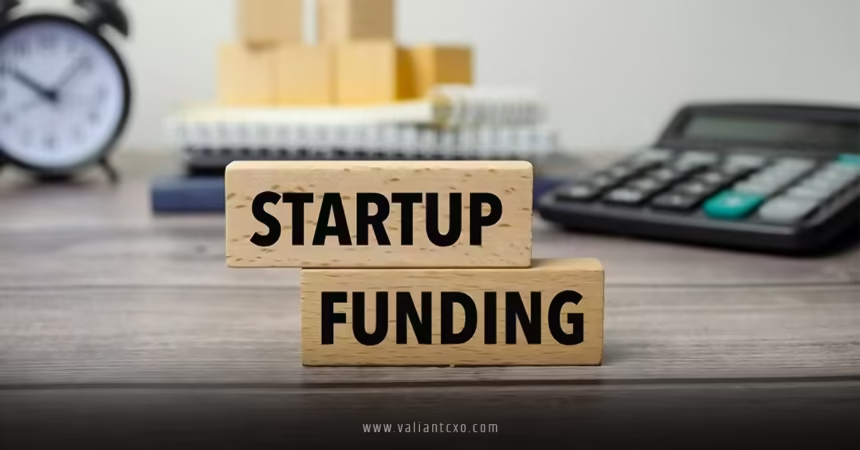Startup funding in USA is the lifeblood of innovation, fueling dreams and turning bold ideas into reality. Imagine you’re an entrepreneur with a game-changing concept—maybe it’s an AI-powered app or a sustainable energy solution. You’ve got the vision, the hustle, and a killer pitch deck, but there’s one big hurdle: money. Without funding, your startup might stay just a sketch on a napkin. In the United States, the startup ecosystem is a vibrant, ever-evolving landscape, offering a smorgasbord of funding options to help you launch and scale. But where do you start? How do you navigate the maze of venture capital, angel investors, and government grants? Let’s dive into the world of startup funding in USA, breaking it down with practical insights, a touch of humor, and plenty of actionable advice.
Why Startup Funding in USA Matters
Startup funding in USA isn’t just about cash—it’s about opportunity. The U.S. is home to some of the world’s most dynamic startup hubs, from Silicon Valley’s tech giants to New York’s fintech innovators. In 2024 alone, U.S. startups raised over $160 billion across thousands of deals, with AI, biotech, and clean energy leading the charge. Why does this matter? Because funding is the rocket fuel that powers growth, hiring, and product development. Without it, even the brightest ideas can fizzle out. Whether you’re a first-time founder or a seasoned entrepreneur, understanding the funding landscape is your ticket to turning vision into victory.
The Economic Impact of Startups
Startups aren’t just cool ideas; they’re economic powerhouses. They create jobs, drive innovation, and challenge established industries. Think of startups like the little fish that shake up the big pond—disrupting markets and pushing giants to evolve. In the U.S., startups contribute billions to the economy, with cities like San Francisco, Austin, and Boston buzzing with entrepreneurial energy. Startup funding in USA keeps this engine running, ensuring that new ideas keep flowing and industries keep growing.
Types of Startup Funding in USA
When it comes to startup funding in USA, there’s no one-size-fits-all. The funding you choose depends on your startup’s stage, industry, and goals. Let’s explore the main options, each with its own flavor and flair.
Bootstrapping: Your Own Money, Your Own Rules
Bootstrapping is like cooking with whatever’s in your pantry—you use your own resources to get started. This means dipping into personal savings, credit cards, or even borrowing from family and friends. It’s gritty, it’s tough, but it gives you full control. No investors breathing down your neck, no equity to give up. In the U.S., many founders bootstrap in the early days, especially for lean startups testing their ideas. The downside? You’re limited by your own wallet, and scaling can be slow. But for scrappy entrepreneurs, bootstrapping is a badge of honor.
Angel Investors: Your Startup’s Fairy Godparents
Angel investors are wealthy individuals who sprinkle their cash on early-stage startups, often in exchange for equity. Think of them as the fairy godparents of startup funding in USA—swooping in to grant your wish for capital. They typically invest anywhere from $10,000 to $500,000, and they bring more than money. Angels often offer mentorship, industry connections, and street cred. In 2025, angel networks like AngelList are thriving, connecting founders with investors who believe in their vision.
Venture Capital: The Big Leagues
Venture capital (VC) is the heavyweight champion of startup funding in USA. VCs are firms that invest millions (sometimes billions) in startups with high growth potential. In return, they take equity and often a board seat. In 2024, VC funding in the U.S. hit $66.5 billion in Q3 alone, with AI startups like xAI and Databricks securing massive rounds. VCs are picky, though—they want startups with proven traction, a solid team, and a huge market opportunity. If you’re dreaming big, VC might be your path, but brace for intense scrutiny and pressure to scale fast.
Crowdfunding: The People’s Choice
Crowdfunding is like throwing a party where everyone chips in for the snacks. Platforms like Kickstarter and Indiegogo let you pitch your idea to the masses, raising small amounts from many backers. It’s a fantastic way to validate your product and build a community. In the U.S., crowdfunding has exploded, especially for consumer products and creative projects. You don’t give up equity, but you do need a compelling story and a knack for marketing to stand out.
Government Grants and Programs: Free Money (Sort Of)
Did you know the U.S. government can be your startup’s sugar daddy? Through programs like the Small Business Innovation Research (SBIR) and Small Business Technology Transfer (STTR), affectionately called “America’s Seed Fund,” the government offers grants to startups in tech, biotech, and clean energy. These are non-dilutive, meaning you don’t give up equity. In 2024, these programs dished out billions to innovative startups. The catch? The application process is a bureaucratic maze, but the payoff can be worth it.
The Startup Funding Stages in USA
Startup funding in USA follows a predictable journey, like leveling up in a video game. Each stage has its own challenges and rewards. Let’s break it down.
Pre-Seed: Planting the Idea
Pre-seed funding is where it all begins. You’ve got an idea, maybe a prototype, but no revenue. Funding at this stage—often under $1 million—comes from personal savings, friends, family, or angel investors. It’s about proving your concept and building a minimum viable product (MVP). In the U.S., pre-seed rounds are competitive, with investors hunting for the next unicorn. Nail your pitch, and you’re off to the races.
Seed: Sprouting the Business
Seed funding is like watering a young plant—it helps your startup take root. Typically ranging from $500,000 to $2 million, seed rounds fund product development, early hires, and market testing. Angel investors and early-stage VCs dominate this space. In 2025, seed funding in USA is hot, especially for AI and fintech startups. A strong seed round sets the stage for bigger things.
Series A: Scaling Up
Series A is where you hit the gas. With $2 million to $15 million, you’re building a team, refining your product, and chasing customers. VCs lead Series A rounds, and they want to see traction—think revenue, user growth, or partnerships. In the U.S., Series A startups in healthcare and SaaS are drawing big bucks. It’s a make-or-break moment—succeed here, and you’re a contender.
Series B and Beyond: Going Big
Series B, C, and beyond are about world domination (or at least market domination). These rounds, often $10 million to $100 million+, fuel rapid expansion, global markets, and acquisitions. In 2024, U.S. startups like Anduril ($1.5B Series F) and Databricks ($10B Series J) showed how Series funding can catapult companies to billion-dollar valuations. At this stage, you’re playing with the big dogs—think Sequoia, Andreessen Horowitz, and Founders Fund.
How to Secure Startup Funding in USA
Securing startup funding in USA is like dating—you need to charm, impress, and prove you’re worth the commitment. Here’s how to woo investors and land the cash.
Craft a Killer Pitch Deck
Your pitch deck is your love letter to investors. It needs to be clear, compelling, and concise. Highlight your problem, solution, market size, team, and traction. Use visuals to make it pop, and don’t bore them with 50 slides. In the U.S., investors see hundreds of decks a month, so make yours stand out. Pro tip: Tailor it to each investor’s focus—VCs love growth metrics, while angels might care more about your story.
Network Like a Pro
In the U.S., startup funding in USA often comes down to who you know. Attend industry events, join accelerators like Y Combinator, and slide into LinkedIn DMs (tastefully, of course). Building relationships with investors before you ask for money is key. Warm intros from mutual contacts can open doors that cold emails can’t.
Nail the Due Diligence
Investors will dig into your startup like detectives. Be ready with financials, market research, and a rock-solid business plan. Transparency builds trust, and trust wins checks. In 2025, U.S. investors are extra cautious, so have your ducks in a row—think contracts, IP rights, and customer data.
Show Traction
Traction is your startup’s heartbeat. Whether it’s 1,000 paying users, a signed enterprise deal, or a viral prototype, show investors you’re gaining momentum. In the U.S., traction separates the dreamers from the doers. Even a small win, like a successful pilot, can make investors sit up and take notice.
Challenges of Startup Funding in USA
Startup funding in USA isn’t all champagne and term sheets. It’s a tough game with plenty of hurdles.
High Competition
The U.S. startup scene is a crowded dance floor. With thousands of startups vying for attention, standing out is brutal. Investors are bombarded with pitches, so you need a unique value proposition and a stellar team to cut through the noise.
Equity vs. Control
Giving up equity is like sharing your pizza—you want to keep as much as possible. But investors often want a big slice. Balancing funding with control is a tightrope walk. In the U.S., founders often give up 10-20% equity in early rounds, so negotiate wisely.
Economic Uncertainty
Economic swings can make investors skittish. In 2025, rising interest rates and global tensions are making VCs more selective. Startup funding in USA is still robust, but you’ll need to prove your business can weather storms.
Trends Shaping Startup Funding in USA in 2025
The startup funding in USA landscape is always evolving, and 2025 is no exception. Here’s what’s hot right now.
AI Dominates
AI is the golden child of startup funding in USA. From xAI’s $6 billion Series B to Cohere’s $940 million Series D, investors are pouring money into artificial intelligence. If your startup leverages AI, you’re in a sweet spot—just make sure your use case is unique.
Sustainability Surges
Clean energy and sustainability are stealing the spotlight. Startups like Mast Reforestation ($83.9M) are attracting investors who want to save the planet and make a profit. Green tech is a win-win, and U.S. investors are all in.
Diverse Funding Sources
Forget relying solely on VCs. Startups are tapping government grants, crowdfunding, and even crypto funding. This diversification makes startup funding in USA more accessible than ever, especially for early-stage founders.
Tips for Success in Startup Funding in USA
Ready to dive into startup funding in USA? Here are some battle-tested tips to boost your chances.
- Know Your Numbers: Investors love data. Be ready to talk revenue, customer acquisition costs, and lifetime value like a pro.
- Build a Diverse Team: A strong, varied team signals competence. In the U.S., investors bet on people as much as ideas.
- Leverage Accelerators: Programs like Techstars and Y Combinator offer funding, mentorship, and connections. They’re like startup boot camps.
- Stay Resilient: Rejection is part of the game. Keep refining your pitch and pushing forward.
Conclusion
Startup funding in USA is a thrilling, high-stakes journey that can turn your vision into reality. From bootstrapping to billion-dollar VC rounds, the U.S. offers a wealth of opportunities for entrepreneurs with grit and ambition. By understanding the funding landscape—angel investors, VCs, crowdfunding, and grants—you can chart a path that suits your startup’s needs. Stay sharp, build relationships, and show investors why your idea is the next big thing. The road to funding isn’t easy, but with the right strategy, you can secure the capital to make your mark. So, what’s stopping you? Get out there, pitch your heart out, and let startup funding in USA fuel your dreams.
FAQs About Startup Funding in USA
1. What is the best way to find startup funding in USA?
The best approach depends on your startup’s stage. Early on, try bootstrapping or angel investors via platforms like AngelList. For scaling, pitch to VCs or explore crowdfunding. Networking at industry events and accelerators can also open doors.
2. How much equity should I give up when seeking startup funding in USA?
It varies by stage. In pre-seed or seed rounds, expect to give up 10-20% equity. Later rounds may require more, but negotiate to retain control. Always consult a lawyer to protect your interests.
3. Are government grants a viable option for startup funding in USA?
Yes! Programs like SBIR and STTR offer non-dilutive funding for tech and science startups. They’re competitive, but the payoff—free money with no equity loss—is huge.
4. How do I make my startup stand out to investors in the USA?
Show traction—think revenue, users, or partnerships. Craft a compelling pitch deck, highlight a strong team, and target investors who align with your industry. Personalize your outreach to stand out.
5. What industries are attracting the most startup funding in USA in 2025?
AI, biotech, fintech, and clean energy are hot. AI startups alone raised nearly $19 billion in 2024, and the trend continues. Sustainability and healthcare are also investor favorites.
For More Updates !! : valiantcxo.com


